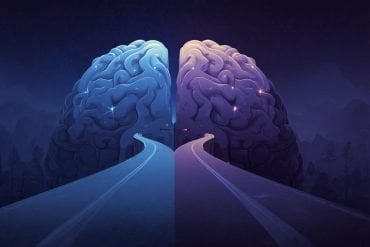Summary: A new study reports on a link between coprophagia and certain neurodegenerative diseases and dementias.
Source: Mayo Clinic.
Coprophagia, eating one’s feces, is common in animals but rarely seen in humans. Mayo Clinic researchers reviewed the cases of a dozen adult patients diagnosed with coprophagia over the past 20 years and found that the behavior is associated with a wide range of neuropsychiatric disorders, particularly neurodegenerative dementias. The findings are published in the Journal of Neurology.
Of the dozen patients with coprophagia diagnosed at Mayo Clinic from 1995 to 2015, half had dementia. In those two decades, Mayo Clinic evaluated 67,000 patients with a dementia diagnosis. This yields a frequency of reported coprophagia cases in dementia of about 1 per 10,000 people.
While coprophagia is rare in humans, it is also likely underreported, says lead author Keith Josephs, M.D., a behavioral neurologist at Mayo Clinic. He encourages families and caregivers who see the behavior to reach out to patients’ care teams for help. “Know that there is treatment available,” Dr. Josephs says. “Your loved one doesn’t have to be removed from the assisted living or nursing home environment.”
Behavioral modifications, such as restrictive clothing and drug therapy with antiepileptics and antidepressants, were tried to treat the coprophagia. An antipsychotic drug may be needed to stop the behavior, the study authors say, noting that the antipsychotic medication haloperidol stopped the behavior in four patients.

Brain scans of the six dementia patients showed medial temporal lobe atrophy, including a part of the brain called the amygdala, had moderate to severe atrophy. The cause of degeneration was unknown, although one patient who had died with a brain autopsy showed a type of brain degeneration known as frontotemporal lobar degeneration, Dr. Josephs says. In the other six patients without dementia, age, seizures or metabolic changes were potential culprits.
Coprophagia carries a risk of infection and even death.
Coprophagia is a big word for an uncomfortable topic: eating one’s own feces. Keith Josephs, M.D., a Mayo Clinic neurologist, encourages families to reach out for help if their loved one exhibits this rare behavior. A new study shows haloperidol can help.
The 12 patients with coprophagia were split evenly between men and women. Additional behaviors were common in these patients, including scatolia (fecal smearing), hypersexuality, aggression and pica (eating objects of any kind). The median age at onset of coprophagia was 55 years, with a range from 20 to 88 years. In humans with coprophagia, no nutritional deficiency was documented.
Coauthors are: Jennifer Whitwell, Ph.D.; Joseph Parisi, M.D.; and Maria Lapid, M.D., all of Mayo Clinic.
Funding: No funding data available.
Source: Susan Barber Lindquist – Mayo Clinic
Image Source: This NeuroscienceNews.com image is credited to the researchers/Mayo Clinic.
Video Source: The video is credited to Mayo Clinic.
Original Research: Abstract for “Coprophagia in neurologic disorders” by Keith A. Josephs, Jennifer L. Whitwell, Joseph E. Parisi, and Maria I. Lapid in Journal of Neurology. Published online May 2016 doi:10.1007/s00415-016-8096-1
[cbtabs][cbtab title=”MLA”]Mayo Clinic. “Brain Scans of Dementia Patients with Coprophagia Showed Neurodegeneration.” NeuroscienceNews. NeuroscienceNews, 19 May 2016.
<https://neurosciencenews.com/coprophagia-dementia-neurology-4258/>.[/cbtab][cbtab title=”APA”]Mayo Clinic. (2016, May 19). Brain Scans of Dementia Patients with Coprophagia Showed Neurodegeneration. NeuroscienceNews. Retrieved May 19, 2016 from https://neurosciencenews.com/coprophagia-dementia-neurology-4258/[/cbtab][cbtab title=”Chicago”]Mayo Clinic. “Brain Scans of Dementia Patients with Coprophagia Showed Neurodegeneration.” NeuroscienceNews.
https://neurosciencenews.com/coprophagia-dementia-neurology-4258/ (accessed May 19, 2016).[/cbtab][/cbtabs]
Abstract
Coprophagia in neurologic disorders
We report on the unusual behavior of coprophagia (eating one’s own feces) in neurologic disorders. The Mayo Clinic Health Sciences-computerized clinical database was queried for all patients evaluated at our institution between 1995 and 2015 in which coprophagia was documented in the medical records. Twenty-six patients were identified of which 17 had coprophagia. Of the 17 patients, five were excluded due to age at onset less than 10 years, leaving 12 adult patients for this study. The median age at onset of coprophagia in the 12 patients was 55 years (range 20–88 years), and half were female. Additional behaviors were common including scatolia (fecal smearing), hypersexuality, aggression, and pica (eating objects of any kind). Coprophagia was associated with neurodegenerative dementia in six patients, developmental delay in two, and one each with seizures, steroid psychosis, frontal lobe tumor, and schizoaffective disorder. Brain imaging in the six patients with dementia showed moderate-to-severe medial temporal lobe atrophy, as well as mild frontal lobe atrophy. Autopsy examination was performed in one patient and revealed frontotemporal lobar degeneration pathology. Many different behavioral and pharmacologic therapies were implemented, yet only haloperidol was associated with discontinuation of the behavior. Coprophagia is associated with different neurologic disorders, particularly neurodegenerative dementias. The behavior may be related to medial temporal lobe atrophy, similar to the Klüver–Bucy syndrome. Haloperidol appears to be effective in treating the behavior, at least in some patients.
“Coprophagia in neurologic disorders” by Keith A. Josephs, Jennifer L. Whitwell, Joseph E. Parisi, and Maria I. Lapid in Journal of Neurology. Published online May 2016 doi:10.1007/s00415-016-8096-1






